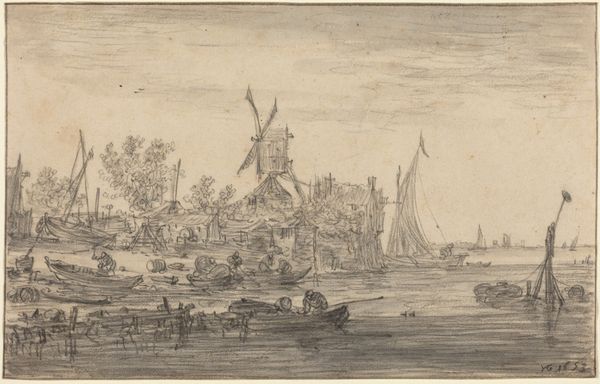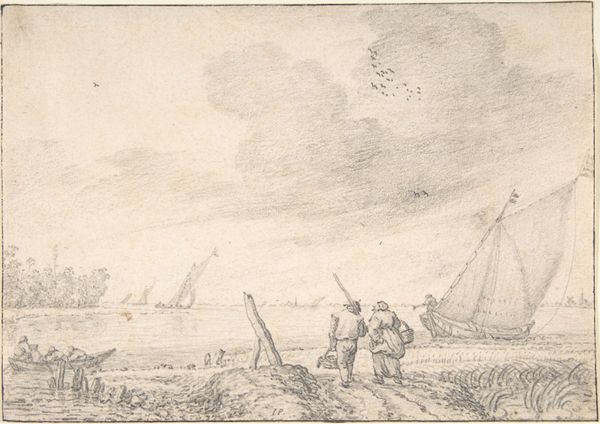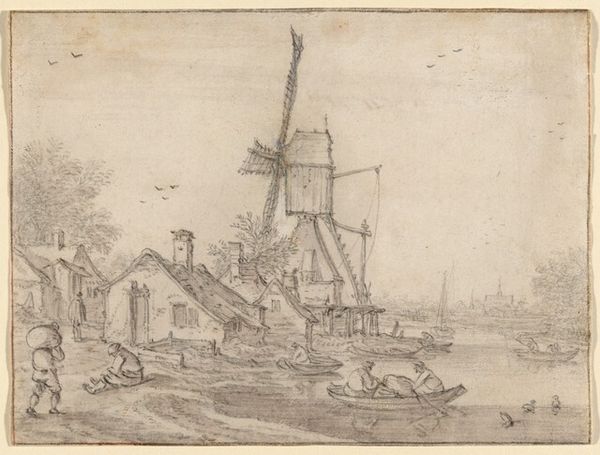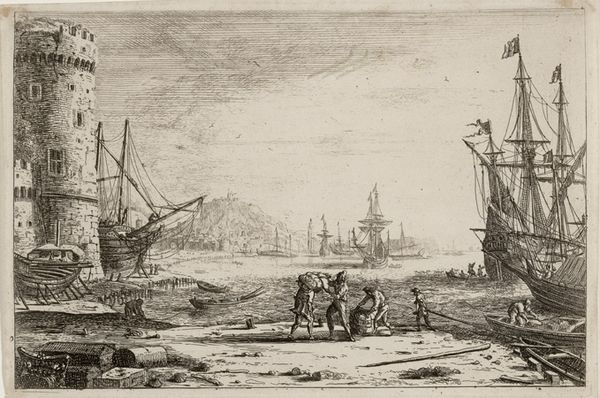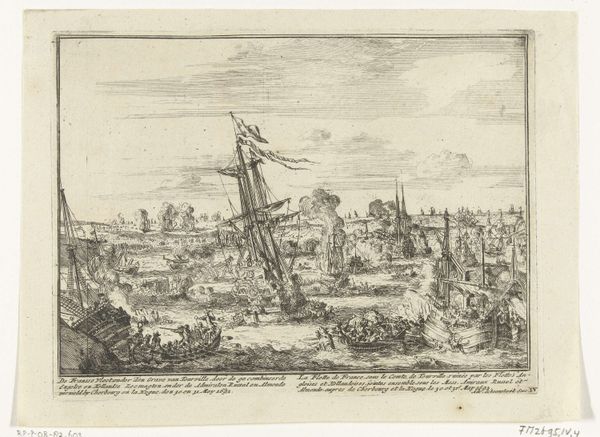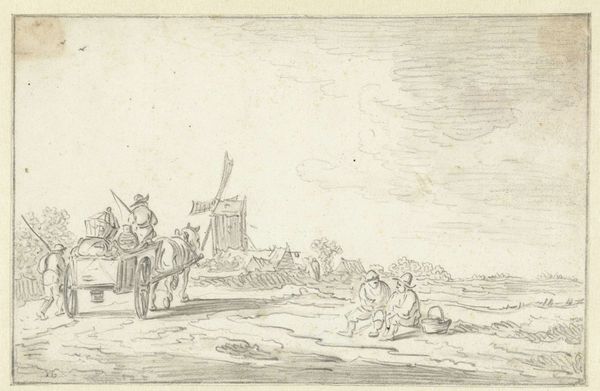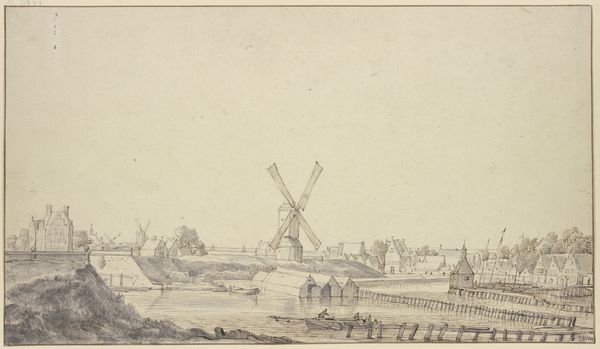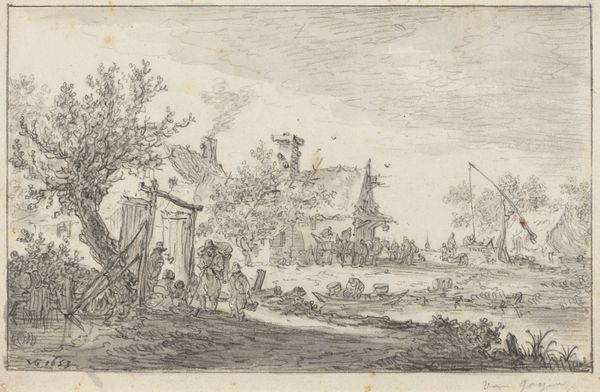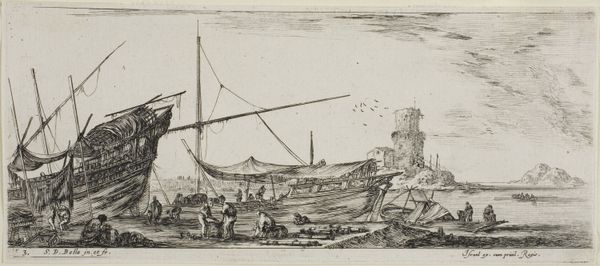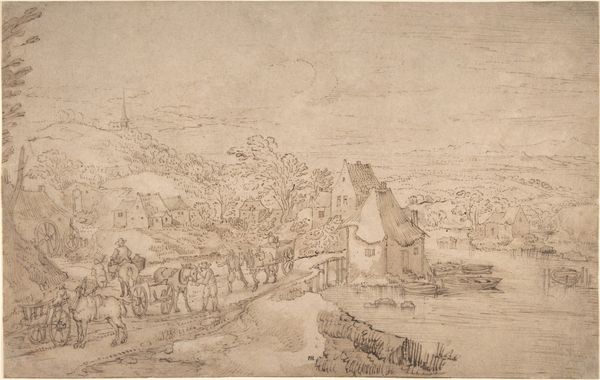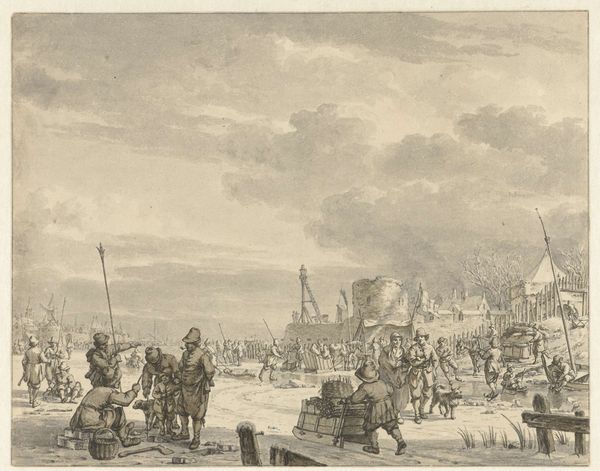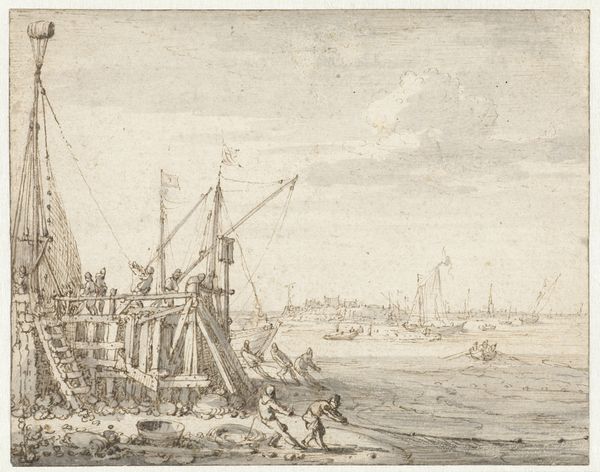
drawing, print, etching, watercolor, pencil
#
drawing
#
dutch-golden-age
# print
#
etching
#
pencil sketch
#
landscape
#
watercolor
#
pencil
#
watercolor
Dimensions: 7 3/4 x 12 3/16 in. (19.7 x 31 cm)
Copyright: Public Domain
Editor: Here we have Jan Brueghel the Elder’s "Dutch Landscape with Windmills," created sometime between 1600 and 1700. It's currently held at the Metropolitan Museum of Art. What strikes me most is the quiet industriousness, the very detailed renderings done in what appears to be pen, ink and watercolor. How do you interpret this work, particularly considering the presence of the windmills? Curator: Windmills, especially in the Dutch landscape, often symbolize human ingenuity and control over nature, right? But here, look closer: they’re almost like watchful sentinels, presiding over the daily life unfolding below. Notice the contrast—the precise detail of the windmills against the more freely rendered figures and landscape. Does that speak to a potential tension between progress and the more organic rhythms of life? Editor: I see what you mean. The windmills do dominate the composition, suggesting that relationship isn't quite balanced. But what about the people and animals? They seem so ordinary, even incidental. Curator: "Incidental" might be key. Brueghel, steeped in the traditions of his time, wasn't merely documenting a scene. The common folk represent enduring aspects of human existence – labor, community, perhaps even a certain harmony with the natural world, despite the intrusion of these new technologies. What values do you think Brueghel highlights in depicting this blending? Editor: That’s a fascinating point. Maybe the "ordinary" is exactly what he wanted to immortalize - their perseverance and hard work. I hadn't considered how deeply embedded symbolic layers could be. Curator: It’s a landscape brimming with historical and cultural echoes. Every line, every figure, carries a weight. Recognizing those can change how we respond to even the simplest images. Editor: This piece feels far from simple now. I’m left contemplating the narrative between humanity, nature, and technological advancement!
Comments
No comments
Be the first to comment and join the conversation on the ultimate creative platform.
